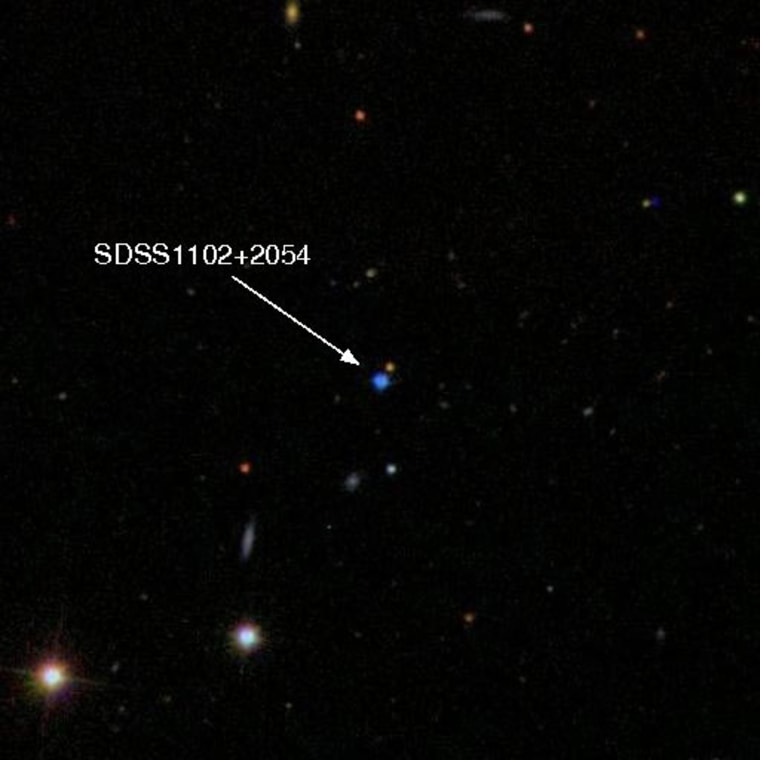How stars end their lives depends on how massive they are.
Large stars are thought to die in explosive fits and collapse into the densest objects in the universe — black holes and neutron stars. Small stars languish as dim objects called white dwarfs. But what happens to stars right on the border is not certain. Now astronomers have observed two peculiar white dwarfs that may represent the end point for these objects.
White dwarfs can be about the size of Earth, but contain roughly the mass of the sun. They have already burned up most of their fuel and shine weakly by releasing heat. Most white dwarfs are made of compacted carbon and oxygen, with small amounts of a few other elements.
The new observations found, for the first time, two white dwarfs that contained much more oxygen than carbon, perhaps representing the end stage for stars that are between seven and 10 times the mass of the sun — just under the mass threshold for neutron stars and black holes.
"These are literally the first two white dwarfs which have this kind of chemical composition," said Boris Gänsicke of the University of Warwick, lead author of a paper describing the finding in the Nov. 13 issue of the journal Science. "These stars may define the upper boundary of stars that can make white dwarfs."
The stars, called SDSS 0922+2928 and SDSS 1102+2054, are 400 and 220 light-years from Earth, respectively.
While stars are still young they power themselves by burning hydrogen and helium in nuclear fusion reactions in their cores. Our sun is still doing this, but at some point in a star's life, it will run out of this fuel and its gaseous outer layers will puff up and float out into space. Then the inner parts will condense; just how compacted they get depends on the star's mass.
The hugest stars will crumple all the way down to neutron stars or even black holes, while the majority of stars will stop at the white dwarf stage. This is the predicted fate of our sun.
But the most massive of white dwarfs will undergo another period of nuclear fusion where they burn up carbon to form the element neon. That's what researchers think the newly-discovered stars are.
"Models predict that if you go to the top end of the mass range of white dwarfs, they manage to burn most of the carbon layer," Gänsicke told SPACE.com. "These two stars definitely have lower abundances of carbon."
The researchers discovered the stars using spectroscopy data from the Sloan Digital Sky Survey. They hope to take more detailed follow-up measurements that could confirm whether there is neon present in the stars, which would result from the carbon burning.
